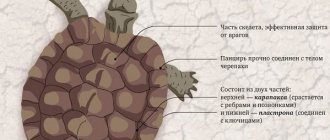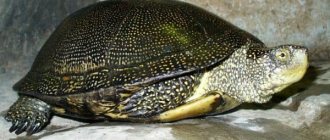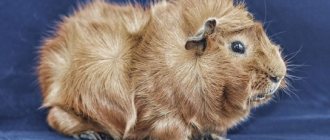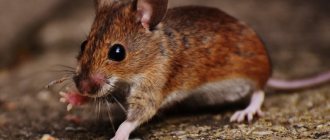- How long does a lynx live?
It just so happens that some of the most formidable predators on our planet are representatives of the cat family, and every kind and affectionate cat has very formidable relatives. One of them is the lynx, which, in fact, is large, wild and, of course, very predatory
a cat that lives in the forests. Our article today is about her.
Description, structure, characteristics
The average body length of a lynx is from 80 to 130 cm. The weight of a lynx, if it is a male, is from 18 to 25 kg, females are slightly smaller and correspondingly lighter, their weight is usually 17-18 kg. The body of this animal is short and dense.
It has, like all cats, a tail, although it is a lynx tail, usually with a chopped off end. The lynx's ears are decorated with fluffy tassels. Also, these “cats” have elongating hair on the beard, creating a kind of sideburn. The lynx's muzzle is round and small, but its eyes are larger, and with vertical pupils. Her vision is very good, besides, the lynx is able to see in the dark, the same can be said about hearing and smell, all these senses in lynxes are as well developed as in ordinary cats.
The lynx's fur is thick, silky and beautiful. Large and fluffy paws provide an excellent opportunity for the animal to move through the snow in winter. The color of the lynx varies depending on its species and habitat, from red to gray-brown.
Why does the lynx have a short tail?
All representatives of felines use the tail for maneuvering and quickly changing the direction of running while pursuing prey. The lynx spends most of its time in the trees and prefers to hunt from ambush, so the tail does not play such an important role for it. On the contrary, a long tail would prevent the animal from quickly moving along branches and hiding in hollows. This is most likely why the lynx is the cat with the shortest tail.
SNOW LEOPARD
Habitats
The lynx lives over a very wide geographical range, but exclusively in the northern hemisphere of our planet: in North America (in the USA and Canada), in the north of Eurasia: these cats can be found in the Siberian taiga, and in the mountains of China and Tibet, and in the Scandinavian peninsula. As for our country Ukraine, the common lynx is found, among other things, in the Carpathian forests.
The lynx always chooses dense forest areas as its habitat. It happens that in search of prey, lynxes can go to forest edges or meadows, but they do not stay there for long, always returning to their native forest thickets.
Where does it live?
Photo: Lynx cat
The lynx lives in rugged forests where there is a lot of prey. In sparse forests or bush thickets it is much less common. This cat is also found in mountains and cactus thickets. A lynx will never settle in open areas. In general, she tries to stay as far away as possible in the territories she inhabits.
The common lynx lives only in the Northern Hemisphere of the Earth. Its habitat extends almost throughout Scandinavia, Europe, to the east and north of Russia, and further to Central Asia.
Countries where the common lynx is found:
- Balkan Peninsula: Serbia, Macedonia, Albania;
- Germany;
- Carpathians: from the Czech Republic to Romania;
- Poland;
- Belarus;
- Ukraine;
- Russia;
- Scandinavia: Norway, Finland, Sweden;
- France;
- Switzerland;,
- Transcaucasia: Azerbaijan, Armenia, Georgia;
- Central Asia: China, Mongolia, Kazakhstan, Uzbekistan, Tajikistan, Kyrgyzstan;
- Baltics.
Among the entire family of cats, the common lynx is the most cold-resistant animal. It is found even beyond the Arctic Circle, in Scandinavia. Once upon a time this animal could be seen in any part of Europe. But by the middle of the 20th century it was almost completely exterminated in Central and Western Europe.
Today they are trying to restore the population of these cats, and very successfully. However, it is scarce everywhere. In Russia, 90% of lynxes live in Siberian coniferous forests, although they are found from the western borders of the country to Sakhalin itself.
Nutrition
It will probably be unnecessary to say that the lynx is an incorrigible predator (like all cats), so its diet consists of various forest animals, most often hares. The lynx also hunts various small rodents, roe deer,
deer (but young ones; an adult deer, which also has powerful antlers, is not always easy to cope with), black grouse birds. Sometimes partridges, raccoons, hazel grouse and even foxes become its prey.
What does it eat?
The diet largely depends on the variety. Small lynxes eat rodents, birds, and hares. Larger common lynxes attack wild boars, young moose, roe deer and deer.
Every day the animal needs to eat up to 2 kg of meat. The lynx covers the uneaten remains of carcasses with fallen leaves or snow. Very often, poorly hidden prey is found by other predators.
MANUL
Enemies in nature
As for the lynx itself, besides humans, its main enemy in natural conditions is
wolf. Or rather, wolves, who, when gathered in a pack, can easily tear a wild cat apart. Knowing this, lynxes try to avoid places where there are many wolves. As you can see, here in the battle between the collectivism of representatives of the canine family - wolves, and the individualism of representatives of the cat family - lynxes, collectivism wins, despite the fact that a single lynx is stronger than a single wolf; it cannot resist a well-coordinated wolf pack.
Dimensions
Adults grow in length from 80 to 130 cm, and the height at the withers reaches about 70 cm. An adult lynx, well-fed and well-formed, is similar in size and weight to a large dog. Vigorous, healthy males reach a weight of 18 to 25 kilograms, although some individuals gain weight in the range of 30 kilograms. Females are slightly smaller in size and weigh no more than 20 kg.
Lifestyle
As we wrote just above, lynx prefers dense forests as habitats. Taiga is an ideal place for lynx. All lynxes can climb trees well and swim well. The spotted color of the lynx helps to camouflage it. These animals lead a solitary lifestyle, at most in pairs of male + female, in which they lose to their competitors, wolves.
In search of food, a lynx can walk up to 30 km a day. They go out hunting at dusk, lying in wait for potential prey in ambush, then making a sharp jerk - the speed of a lynx during a rapid rush can reach up to 40 km per hour. It is interesting that the lynx is not too afraid of people, and may well attack, including a person, but only if it is very persistent and careless, it usually prefers other loess game.
Hunting
The main daily activity of the lynx is hunting. Representatives of the species spend the bulk of the day searching for food. During the daytime, adults rest in a den or high on tree branches. The hunt begins at dusk.
There is an opinion that lynxes prefer to jump on victims from tree branches. However, this behavior is atypical for these animals. Typically, lynxes guard their prey from ambushes or try to get close to the game at a short distance from which they can make a lightning-fast throw. Once in the vicinity of a potential catch, the predator covers the remaining distance with several jumps. The lynx is capable of chasing prey at distances of up to 80 kilometers. Then the predator runs out of steam and stops.
Types, photos and names
There are several types of lynx, below we will describe them in more detail.
Common lynx
The most common representative of this species, everything that we wrote above, is primarily swayed by the common lynx.
Canada lynx
Some zoologists consider it a subspecies of the common lynx. As the name suggests, this lynx lives mainly in Canada, but it can also be found in a number of northern US states (Idaho, Montana). It also differs from the ordinary lynx in being half the size; its body length is 48-56 cm. The fur of the Canadian lynx is grayish-brown in color.
Iberian lynx
This type of lynx is found in the southwest of Spain, nowadays mainly only in the territory of the Coto Doñana National Park and is the rarest in nature. If the lynx as a whole species is included in
Red Book, since it is endangered, the Iberian lynx is currently not only one of the rarest mammals on planet Earth - according to zoologists, its population is currently only about 100 individuals, and Every effort must be made to preserve the Iberian lynx into the future.
In appearance, the Iberian lynx differs from the usual one in that it has a lighter coat color and the presence of pronounced spots, which gives it a resemblance to a leopard.
Red Lynx
Living in the United States, the red lynx is distinguished by its red-brown color, with gray shades, and the presence of a white mark on the inside of the tip of the tail (other lynxes have black). It is also smaller in size compared to the common lynx; the weight of the red lynx is 6-11 kg. And what is most interesting, among red lynxes there are sometimes melanists, that is, representatives with a completely black color, which, like representatives of melanistic jaguars and melanistic leopards, are called
Panthers
Interesting facts about lynx
- In ancient Greek mythology, there is a legend about the Scythian king Linkh, who wanted to deceive himself for the glory of being a teacher of agriculture. Demeter, having learned about this, turned Linkh into a spotted cat, and the dagger thrown by the goddess after the fleeing animal cut off part of its tail. This is how the lynx with its shortened tail appeared in the animal kingdom. The scientific name of the lynx Lynx is taken from the ancient Greek language and is consonant with the name of the Scythian king. Translated, it means “red”.
- For a long time, the caracal (steppe lynx), which lives on the African continent and East Asia, was classified as a genus of lynx. However, genetic analysis showed that this species has a number of differences, and therefore caracals were classified as a separate genus.
- Lynxes have excellent hearing and sharp eyesight. In ancient times, they were credited with supernatural abilities, including the ability to see through objects.
- With the onset of cold weather, the lower part of the lynx's paws becomes covered with fur. Thick fur allows the animal to move through the snow without falling through.
Reproduction
The mating season for lynxes, like their close relatives cats, begins in March. And it is also accompanied by loud purring and meowing (those who have domestic cats know what this is). It happens that several males begin to court one female at once, and she chooses the strongest and most worthy among them. As a sign of love, lynxes often lick each other's fur.
Lynx pregnancy lasts 65-75 days, usually 2-3 lynx cubs are born at a time. Again, like their closest feline relatives, they are born blind, their eyes appear only on the 12th day of life. At first, the mother lynx takes every possible care of the babies and feeds them. In general, with lynxes everything happens here very similar to domestic cats.
Peculiarities
The domestic lynx differs from its ancestor in many qualities. The domestic specimen was produced by crossing a small wild animal with an ordinary cat. The only condition for this was the selection of a color similar to the natural color of the forest beauty.
The caracal is considered a domestic lynx. But it also requires careful care, certain conditions and constant care from the owners. A spacious enclosure is needed.
We must not forget that keeping a lynx within the walls of a house is not an easy task, and additional considerable financial costs will be required.
Particular attention should be paid to the diet: meat, fish, bones and no dry food. It is important to systematically comb the animal, since when licking the fur, the lynx can swallow it, choking on it.
Many people are interested in the question: is a lynx dangerous at home? It's up to you to decide: a wild lynx is a predator, an artificially bred one is also a predator, although its natural instincts are hidden quite deeply. And predators are always dangerous.
The lynx is the keeper of secrets and symbolizes truthfulness, impeccability, openness, silence and many other qualities of clairvoyants.
And if you choose the lynx as your totem, beware of deceiving people’s trust, watch your words, choose expressions with caution.
Video
And in conclusion, we invite you to watch an interesting documentary about the lynx from the National Geographic channel - “Lynx - the Elusive Hunter.”
Author: Pavel Chaika, editor-in-chief of Poznavaika magazine
When writing the article, I tried to make it as interesting, useful and high-quality as possible. I would be grateful for any feedback and constructive criticism in the form of comments on the article. You can also write your wish/question/suggestion to my email [email protected] or Facebook, with respect, the author.
Author page
Economic value for humans: Positive
The Eurasian lynx was close to extinction due to heavy hunting for its fur in the early 1900s. Currently, commercial hunting is illegal in all countries except Russia. Eurasian lynxes are carefully protected in Afghanistan, where all hunting and trading is illegal. However, illegal fur trades occur in some countries.











